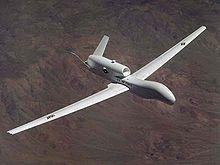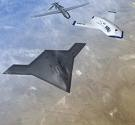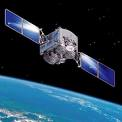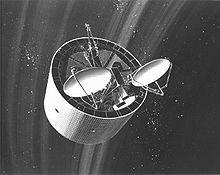Introduction
Military communication has gone through various revolutions aimed at enhancing security services being offered to its people. The military forms a basis through which the security of a country is ensured. Communication is therefore vital not only among the military officials but also to other individuals and organizations to access important information. There have been tremendous improvements made on the same as a satellite has been set to facilitate such kind of communication (Pelton 327). The development of military communication became vital after several threats of terrorist attacks. Using the satellite, the military personnel can now be able to effectively stage their attacks and monitor any threats. Implementation of the satellite as a media of communication is a step that was considered to maintain security in the country. There are a number of activities that can be monitored using this facility. It is used for land, sea and air military which make it more convenient for the entire military team. The device also has the ability of storing information that has been recorded and thus giving the personnel adequate time to review the images and implement them accordingly. In this paper we are basically going to focus on how the device is being applied in military.
International use of military satellite
The use of satellites for military activities was mainly applied by the United States and Russia. This has since taken route in many countries of Europe, Asia and the Middle East. The use of satellite has gained its popularity due to the availability of standard commercial data that makes it suitable for the military. Satellite facilities have been launched for civilian purposes in many countries of which other countries can also pay to use them. This has hence made it possible for the countries that desire such facilities to obtain them easily (Wagner 15). In UK, the facility which is provided by a private contractor has been used since 2005. The network that is mostly used for military services is skynet, the country is however yet to launch a military satellite of its own and mainly relies on United States technology. Skynet 4 that has been in existence was being at an average amount of 2.5 billion dollars (Mott 138). The other three skynet satellites were launched in 2007 to enhance security in the region. There are different kinds of satellite which are used for various reasons. Military satellites are over 270 and over 600 satellites which are used for commercial and other purposes. A satellite is designed to perform more than one function which has intensified its use. A commercial satellite can also be used for military purposes.
Satellites are mainly used for military purposes because they have the ability of locating images. Depending on the strength of the satellite, it has the ability of detecting objects that are tens of centimeters across. They can hence help the military to target and detect underground nuclear discharges and hence taking the necessary action. Satellites are also used for navigation purposes. They are able to locate and target weapons using the various facilities and system. A satellite has two main systems that can be used to carry out such a function; the US global positioning system abbreviated as GPS is commonly used by the armed forces of United Kingdom; the other system is Russian Glonas. Compared to the Glonas, the GPS gives more accurate information within very few meters. Satellites are also used by military personnel for signal intelligence (SIGNIT); this is usually to do with communication detection including signals for broadcasting information. A good example of how the facility was used was in 1990 when the US SIGNIT warned the military forces of the invasion of Iraq in Kuwait (Del Re 57). This happened in July when radar that was out of use in south Iraq became functional.
Satellites are also used by the military for telecommunications which enhances the exchange of information between and among different parties. This is mostly applicable when the military personnel have been placed in different locations and there is hence need for them to communicate so that they know how to target their enemy. For instance, front line commanders can keep in touch with strategic commanders to ensure that the decisions made are up to date. When the armies go out to fight, hey are usually placed at different locations so that they are able to effectively conquer their enemies. They rely on the information that is given by their commanders on the direction that they need to take. Using satellites, the commanders are able to be updated with every single step of their enemies and hence alerting the army men on what they are to do next. Satellites have hence enhanced the performance of the military group. Satellites are also able to detect missiles and hence serving as a warning to the fighters. This technology is however still under development to ensure that missiles are tracked from space along their trajectory early in advance.
Satellites are also known for providing accurate weather patterns that are necessary for military personnel. Unpredictable weather can be a big let down to the armed forces which may hinder them from effectively performing their duties. The satellite however has the ability of reading weather patterns which makes the military to be prepared for the same. In UK, the data is usually accessed through EUMESTAT which is responsible for all European metrological satellite. What the satellites do is to convey the signals recorded in the skies to the ground where they are interpreted accordingly. Most of the satellites use radio frequencies to convey the data. The data that has been received from these satellites is not basically for military purposes but is used for other weather forecasts. It is especially necessary for the air forces which have to use fighter jets to track their opponents. They are hence made aware of their routes that will be most convenient for them.
In United Kingdom, there is no specific allocation of funds for military space in the ministry of defense. There is however provisions of funding the same if the ministry have approved a specific need. The government will come in if it has been identified that the space is going to be used for a specific purpose to achieve a certain objective. This is in contrast to a similar ministry in United States where the issue of military space is held with high regards. There are a number of military satellites in United States in which the government operates almost half of them. There is also a set budget for the same which amounts to twenty billion dollars per year (Kumar 180). Russia has a total of over 85 military satellites a number close to the owned by the United States. The US military satellite is sophisticated and has the ability of performing numerous functions. This is basically a reflection of how serious and organized the military force of United States is in comparison to that of UK. United States and Russia are considered to be countries with most organized military that use modern technology to attack their opponents.
United States and Russia have put their defense department on the forefront as they recognize the importance of their safety for economic growth. They were basically the first nations to launch into military space and have continued to make improvements to the same. Even though they spend huge amounts of money in developing and maintaining the websites, they consider it as the best alternatives that will save them from numerous attacks. The need for their investments in military is mainly because thy have been a target for terrorist attacks (Evans 558). US being the most affected and the most hunted by terrorists, has never taken security for granted. There are various policies that have been implemented in United States to ensure that the security of the country is not compromised. The country is not only utilizing the satellite as a means of tracking and attacking their opponents but also other forms of communication. There is a lot about security that is attached to a countries economy which is the main reason why United States and Russia are not taking this for granted. United Kingdom has not faced serious threats of attack and that is why the government has acted slowly in establishing military satellites. The country is however using other systems of modern communication to keep its military aware and alert.
Most Russian investment on military space took place during the onset of the cold war. This was the time when the country felt much at risk of attack and hence saw the need of empowering its military. The investments have however dropped substantially but this has not made the country to relax on military space (Mitra 7). In 2004, it was estimated that the country spent over 170 million dollars on military space. There are also reports that suggest that over 80% of the military satellites used in Russia have exceeded the service life that was estimated for them. Among the systems that Russia’s satellites maintain is early warning. The military is also building its navigation system which will be useful for both military and civil applications.
By 2005, a total of 45 countries had invested in military satellite; among them is India, china and Iran. Military satellite programs that have been launched by china and India are developing at a faster growth compared to others that were launched at a similar time. A surveillance and reconnaissance military satellite system in India was scheduled for a launch in 2007. China on the other hand has a telecommunication, navigation and imagery satellites for military purposes. Most of the other countries use the satellites for dual purposes which basically mean that it is not easy to distinguish between civilian and military activities. There is hence a need for such countries to invest in satellites that will be used basically for military purposes to avoid any inconveniences and interruptions.
Unmanned aerial vehicle (UAV)

Unmanned aerial vehicle is also referred to as a remotely piloted vehicle. It is a kind of airplane that is mostly used for military purposes. Its movements are control by a remote control and thus don’t require a physical human being to ride inside. UAV’s come in different shapes, sizes and colors and have also been modified by time. The aircraft is modified to perform the following functions;
Target and decoy; this refers to the ability of the aircraft to produce a gunnery that can be used for both ground and aerial purpose. They are stimulated whenever there is an enemy missile or aircraft.
Reconnaissance purposes, which is basically to provide intelligence necessary for the battlefield.
Combat, which is high risk attacks It is also used for logistic and cargo operations.
It is used to carry out researches that are designed to improve their military performance.
Apart from UAV mainly being used for military purposes, it can also be used for civilian and commercial functions.
Considering the number of satellites that are in use both for civilian and military purposes, there are instances of communication traffic that may be experienced. To ensure that the situation is under check, the military has employed measures that will ensure that their satellites are jam free. Military satellites have been designed to ensure that they are safe from invasion by intruders. The information that is recorded by the military satellites are basically for security purposes and if they are accessed by other individuals, their purpose may be defeated (Bagad, 58). The architectures that design these kinds of satellites ensure that they are fritted with protocols that will keep the data safe and secure. The UAV satellite system is mostly common in United States where it is used to design to handle communication traffic. Military satellites that are used in United States come with specific features whish are responsible for certain purposes. Some of these common features include the wideband system, the narrowband and the protected. These facilities have the ability to record voice signals as well as taking images.

The wideband is composed of other features that enhance satellite communication. The X-band is mainly used for defense and may also be referred to as DSCA II. There is also the Ka-band which is mainly a broadcast system. It is also referred to as the GBS system; this system has the ability of providing wideband in the order of tens of megabytes. They are the most appropriate in consideration of having a UAV station. They can take real time videos at a specific location and generally give very clear images. They are used in military especially when they want to locate the position of their enemies and hence knowing how to systematically approach them. They also have resolution features which enable them to determine the kind of coverage preferred. They can be set to launch a follow up on a specific individual or a group of people. Other voice devices that have been installed on it are also important in ensuring ground communication. This band can also enable military officials to target their weapons to the right direction. They are able to direct an attack even when the enemy is miles away.
There are two types of satellite links that are used depending on the kind of investigation to be staged. There is the low earth orbiting abbreviated as LEO and the geosynchronous earth orbiting, GEO. The LEO can only function at a lower altitude of 1500 kilometers while the GEO has the ability of function at a higher altitude of 35000 kilometers. It is cheaper to operate a lower earth orbiting considering the minimum strength it requires to capture images. The LEO is closer to the ground and will hence function with a reduced latency. They are basically used to capture data which is closer to them. The GEO on the other hand requires a higher latency to be able to capture data that is miles away from its location. It is more costly to operate and maintain. It is the most convenient and reliable as it can capture images far away. The GEO and the LEO may be staged to function at the same time as one may be used to pass information to the other. There could be a number of satellites that are fitted with different features, using this features they have the ability of transmitting the data that has been recorded from one satellite to the other.
As advancements are done and made to satellite communications being used for military purposes. There is a need for specific satellites to be used for military purposes considering the interferences that civilian satellites are exposed to. It is slightly costly to maintain military satellites because of the specific features that have to be constructed on them (Maral, 550). Unlike other satellites that may also not face the risk of interruption, military satellites may be a target of the enemies which may tamper with the security setting of a country. The fact that they may be a target also makes some countries to opt to utilize civilian satellites for the same. The claims are that it may not be easy for the opponents to know the kind of satellite that is being used for a certain purpose. It is however easier to monitor the interruptions of military information if it is recorded on a specific satellite. Security will also be enhanced on the satellites that are being used for military purposes.

The United States military personnel have put emphasis on the importance of maintain military satellites for security reasons. More improvements are being made to enhance their ability to capture and store information. There is a need for the satellites to be able to function independently and also alerting the concerned personnel for immediate action. They are to be fitted with different alarms which will inform the military on what is happening around. There are different data cables that are used both for sound and image recording. The quality of data that will be recorded depends on the features that have been fitted unto it and the distance from which they are being recorded. There are a number of factors that may also affect the quality of data being recorded like weather and power fluctuations. When it comes to military data, every detail is necessary to facilitate necessary investigations. Military satellites are hence fitted with facilities that will ensure that no information is lost due to environmental factors.
Technology that is used in constructing military satellites is quite different from that being used by civilian satellites. For the satellites to be safe from the traffic jam in the airwaves and at the same time capture specific information, then it needs a more personalized technology. There may be nothing personal about satellite information considering that the environment being used can be accessed by anyone withy the technology (Sterling, 98). The frequency waves being used are channeled towards a specific direction and require specific gadgets to tap them. What the military satellites have to sue should be unique to ensure that they are not channeled to a different user. Communication jam may cause the information to be intermixed and hence being directed on a wrong path. It requires very powerful frequency gadgets to ensure that information collected from a specific satellite is not directed to another outlet. These are some of the consideration that is put in place by the military when designing a satellite.
Skynet
Skynet is a class of military satellites that provides communication services to the British armed forces. There have been five models of the skynet satellite of which the first two backfired. The satellites were designed specially to facilitate military communication. Below is an overview of the other three satellites that worked.
Skynet 3 and 4
Even though it did not succeed it was a stepping stone for the launch of the skynet 4 satellite. There were certain weaknesses that were identified which were corrected in subsequent satellites. In the improvements that were made to the skynet 4 was a large body with a square shape that has antennas. The antennas that are fitted with solar arrays that are used to tap solar energy. Some of the special features that were fitted to skynet 4 include spin-stabilization that was earlier used in the cylindrical satellites. There is also three-axis stabilization which control reaction wheels and momentum wheels. Skynet 4 was purely designed by British aerospace dynamics. The satellites has been improved substantially to accommodate the current needs
Skynet 5
Skynet 5 is an advancement that was made to the skynet 4 model. Some of the special features of the satellite are two solar panels with a length of fifteen meters and a power budget of five kilowatts. It also has four dishes for steerable transmission, a phased array receiver which is designed to detect and resist any kind of jam. The satellite weighs an average of 4700 kilograms. The first constellation of the satellite was launched in 2007 by a rocket called Arianne 5 with an Indian communication satellite. It officially began to function in May 2007. Below is a summary of the launch and use of the different models of the skynet satellites.
DSCS II
The DSCS II satellite is fitted with facilities for data and voice communications commonly used by the United States military. To facilitate its performance, the satellite has antenna platforms withy solar sales on the body. The solar cells have they ability of producing 535 watts. There are also three NiCd batteries that supply the satellite with additional power. The batteries are supported by hydrazine propulsion system to enhance their performance.
Conclusion
Satellite communication is an important communication device that is used mostly for weather forecast and other civilian purposes. The world has however realized the importance of applying the same for military purposes. The security of the county is more important than any other activities being performed by countries. If a country is under the risk of attack, all its activities may be paralyzed and hence raising the need of investing in the military. Many countries have not yet realized the importance of investing min military satellite (Richharia 56). Others like in Europe claim that the costs involved are too much to be allocated in the government budget. The issue of allocating funds for the same may be acceptable for some countries but not an excuse considering the risks that they are exposing themselves to. Satellites have been identified to be important assets in the defense departments considering the number of functions that they can be used for. There are other research being carried out on the use of satellites which will boost their use in military defense. Even though there are other alternative means to monitor the security level of a country, defense will be more intensified if the use of a satellite is incorporated in them. Military superiority should not be left for Russia and U.S.; it is the responsibility of every nation to empower its military.
Works Cited
Bagad, Vishal. Satellite Communications. Technical Publications, 2009.
Chun, Clayton. Defending Space: Us Anti-Satellite Warfare and Space Weaponry: Osprey Publishing, 2006.
Del Re, Enrico. Satellite communications and navigation systems. New York: Springer, 2008
Elbert, Bruce. The satellite communication applications handbook. New Jersey: Artech House, 2004.
Evans, Barry. Satellite communication systems. IET, 1999.
Kumar, Maini. Satellite technology: principles and applications. New York: John Wiley and Sons, 2007
Maral, Gerard. Satellite communications systems: systems, techniques, and technology: California: John Wiley and Sons, 2002.
Mitra, Monojit. Satellite Communication. London: PHI Learning Pvt. Limited, 2005.
Mott, William. Laser satellite communication: the third generation. Greenwood Publishing Group, 2000.
Pelton, Anil. The Basics of Satellite Communications: Intellectual. Engineering Consortium, 2006.
Richharia, Madhavendra. Satellite communications systems: design principles. McGraw-Hill Professional, 1999, p176.
Sterling, Christopher. Military communications: from ancient times to the 21st century: ABC-CLIO, 2007.
Wagner, Lyle. Rate Compatible Punctured Codes, Their Use in Military Satellite Communication Systems. New York: Defense Technical Information Center, 1999.

